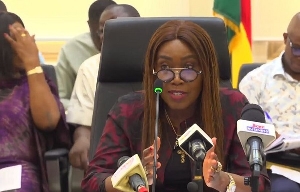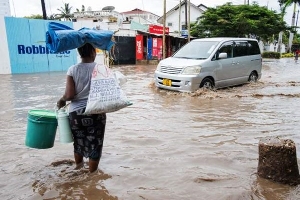- Home - News
- TWI News | TV
- Polls
- Year In Review
- News Archive
- Crime & Punishment
- Politics
- Regional
- Editorial
- Health
- Ghanaians Abroad
- Tabloid
- Africa
- Religion
- Election 2020
- Coronavirus
- News Videos | TV
- Photo Archives
- News Headlines
- Press Release
General News of Sunday, 5 July 2020
Source: www.ghanaweb.com
Factcheck: Was Akufo-Addo’s WHO ‘discharge’ policy claim misleading?
This fact check was first done by fact-checkghana.com.
Claim
In a televised broadcast to the nation on Sunday, June 21, 2020, President Nana Addo Dankwa Akufo-Addo claimed Ghana’s COVID-19 recovered cases had seen more than a 100% increase.
According to him, this was based on a new ‘discharge/recovery’ policy meted out by the World Health Organisation (WHO) and adopted by Ghana despite the policy being revised.
But how can the two policies be the same when the Director of the Ghana Health Service, Dr Patrick Kuma Aboagye in a public health briefing explained the two; 'discharge/recoveries' policies were in fact not the same?
A research conducted by fact-checkghana.com has punched some holes in the president's claim.
Explanation
The President in his address noted: “As at Saturday, 20th June, the total number of positives, cumulatively, stands at fourteen thousand, and one hundred and fifty-four (14,154), out of the two hundred and seventy thousand, three hundred (270,300) tests conducted. Under the revised policy, five thousand, nine hundred and twenty-five (5,925) persons have recovered and been discharged. This brings the total number of recoveries to ten thousand, four hundred and seventy-three (10,473). The number of active cases is, thus, three thousand, five hundred and ninety-six (3,596).”
Akufo-Addo added the Ghana Health Service (GHS) declared the infected COVID-19 persons as “recovered” based on the new “discharge/recovery” policy of the WHO.
The president said, “After three (3) weeks of analysing and studying this update and recommendation and situating it in the Ghanaian context, in line with the admonition by WHO to Member States, this new patient discharge/recovery policy has now been adopted by Ghana, as have some countries in the European Union, Singapore, India, Malaysia, Hong Kong, and in Dubai.”
However, the President’s claim that the number of persons discharged after being declared “recovered” based on the new WHO policy is a rather misleading one towards the fight against the pandemic.
Verification
Checks by GhanaWeb on the WHO's policy as quoted by the President is that for “discharge” and not for “recovery”.
Per the records on the WHO's website, the policy for “discharge” was that of a previous one published on January 12, 2020 involving a different “recovery” policy at the time.
It is also not new that the WHO has been inconsistent with some of its policies and guidelines since the emergence of the Coronavirus pandemic.
The WHO, in a previous update of its initial “discharge/recovery” policy explained that; “to declare an infected COVID-19 patient recovered, it required that a person who tested positive for the virus should have two consecutive, negative tests before they are declared as having recovered.”
The guidelines for recoveries by the WHO further explained; “The initial recommendation to confirm clearance of the virus, and thus allow discharge from isolation, required a patient to be clinically recovered and to have two negative RT-PCR results on sequential samples taken at least 24 hours apart.”
Meanwhile, on June 17, 2020, the WHO, per a recent policy document it released on its website titled “Criteria for releasing COVID-19 patients from isolation”, indicated the policy did not require people to recover or be tested twice before they are released from isolation or discharged from the hospital.
In the document found on the website, the word “recovered” is mentioned only twice and is, in both cases referring to the previous policy and not this new one as asserted by President Akufo-Addo.
However, the word “recovery” is not used at all in the recent WHO policy.
Per the policy document, “discharge”, “discharging” or “discharged” are mentioned 13 times and “release/releasing” (from isolation) is mentioned six (6) times. The policy (discharge) is actually a shift away from the “recovery” policy.
For this purpose, COVID-19 patients are no longer tested to ensure that they are negative before being discharged, according to the WHO’s policy.
The WHO said the new criteria for discharging patients are as follows:
• For symptomatic patients: 10 days after symptom onset, plus at least 3 additional days without symptoms (including without fever and without respiratory symptoms).
• For asymptomatic cases: 10 days after a positive test for SARS-CoV-2.
The WHO adds that it came to revise its previous policy because of problems associated with the previous recovery policy.
There are as follows:
• Long periods of isolation for individuals with prolonged viral RNA detection after the resolution of symptoms, affecting individual well-being, society, and access to healthcare.
• Insufficient testing capacity to comply with initial discharge criteria in many parts of the world.
• Prolonged viral shedding around the limit of detection, having negative results followed by positive results, which unnecessarily challenges trust in the laboratory system.
Additionally, the WHO’s new policy says those who are discharged after the specified number of days without testing can still be positive for the virus but claims their chances of spreading it are slight.
Conclusion
Per the findings, therefore, it is rather misleading for President Nana Akufo Addo Dankwa Akufo-Addo to claim the discharge policy was a “recovery” policy.
It is also worrying that Ghana proceeded to adopt the use of the policy as the basis for declaring a large number of COVID-19 patients as “recovered” without conducting a second test to conclude their status, therefore rendering them discharged and not recovered.
Public Health experts have argued the number of persons discharged from the case count must not be subtracted from the total number of positive cases.
This is due to the high infection rate of the COVID-19 virus.











